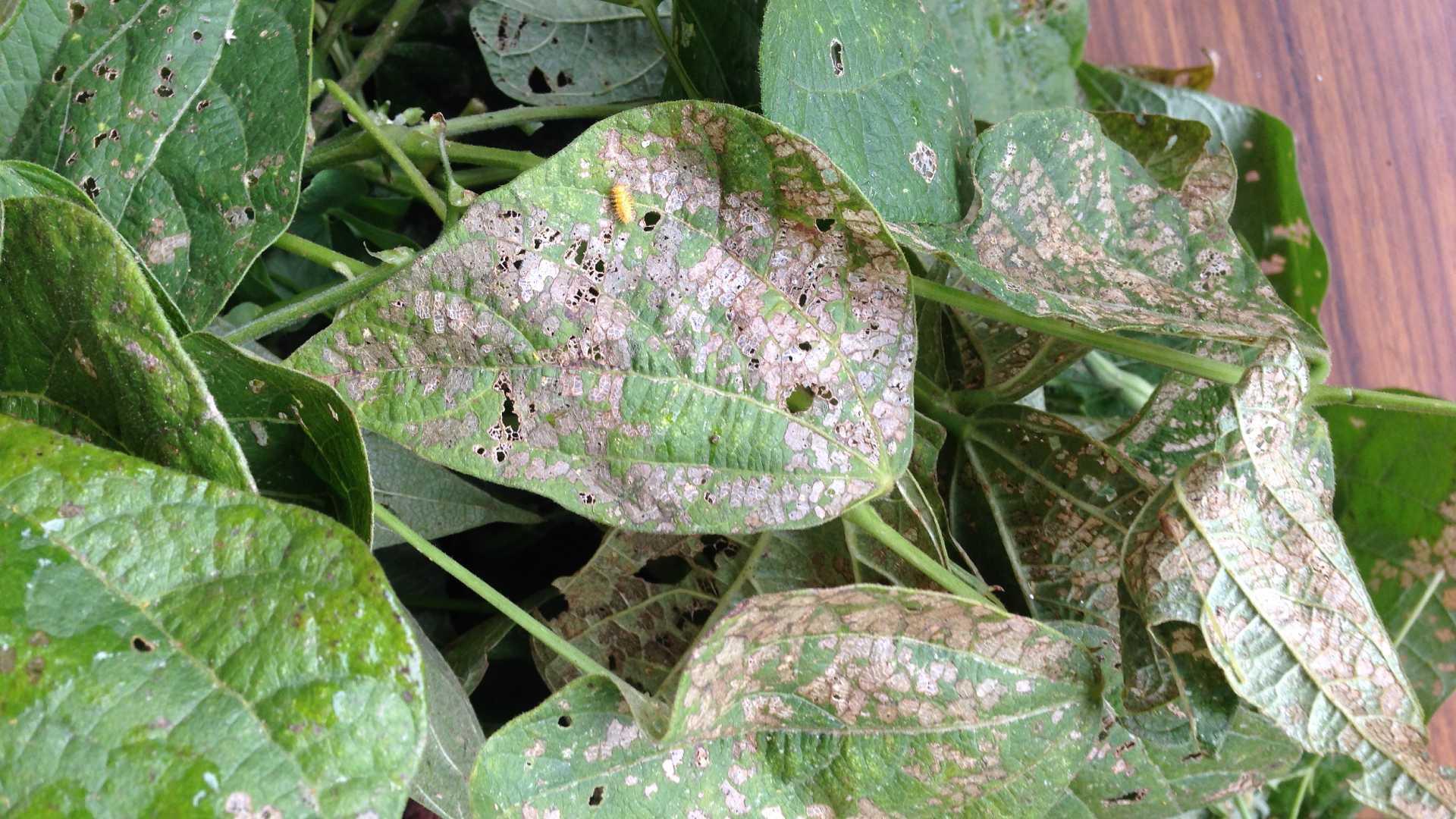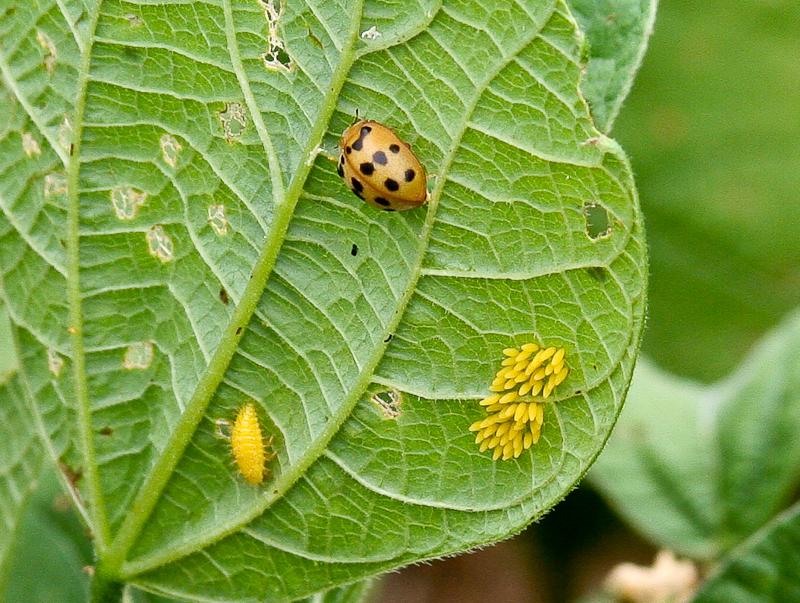Appearance
- Eggs: Bright yellow, laid on-end in clusters of 40-60 on lower leaf surfaces.
- Larvae: Yellow, oval shaped, covered with small black spines (they appear fuzzy), soft-bodied; 4 instars.
- Pupae: Yellow-orange, similar to larvae but smooth and lighter in color, with spiny larval skin pushed down to point of attachment to plant.
- Adults: Beetles with convex oval form like that of ladybugs, 1/3" long, orange to copper colored with 16 black spots arranged in three rows of 6-6-4 on the back.



